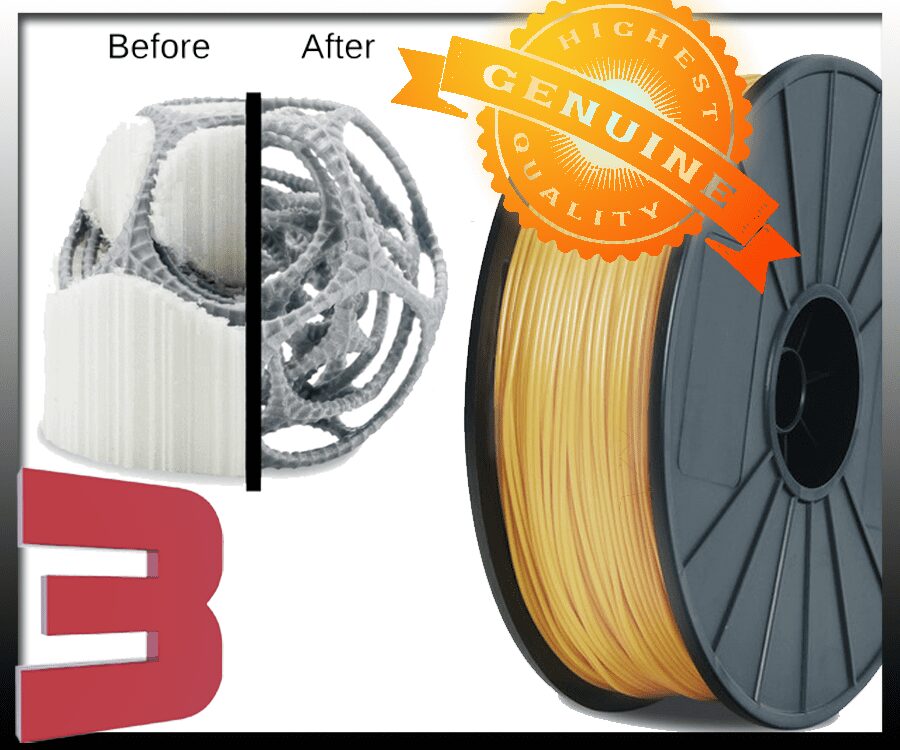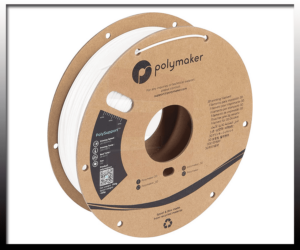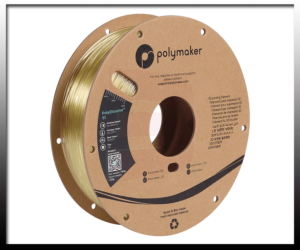PVA – Natural/Raw 1.75mm
$54.90
PVA (Polyvinyl Alcohol) is a water-soluble material that is often used as a support material, but can also be used to print independently.
0.5kg - Natural/Raw
In stock
PVA (Polyvinyl Alcohol) is a water-soluble material that is often used as a support material but can also be used to print independently. PVA supports are useful for complex designs where removing support material manually is difficult or impossible. By leaving the part in a water bath overnight, the material will dissolve completely.
Heated bed
Requires a heated bed to prevent warping. The temperature of the heated bed needs to be at 50–70°C.
Printing PVA
PVA filament is easy to print with due to it’s low melting temperature of 185°C, which also make it a perfect match with PLA, which has very similar printer settings. The only special characteristic to keep in mind is that PVA is very hygroscopic, meaning it very easily absorbs water from the atmosphere. Best practices for managing this include storing the filament in a sealed container or drying it in an oven before printing.
Dissolve PVA
Dissolving PVA is fairly easy but can take some time. Submerging your 3D-Print in a container filled with water for a couple of hours will make sure that the PVA support material is properly removed from your 3D-Print. A cube (20x20x20 mm) with 0.8 mm thick walls and 20% infill takes about 2 hours to fall apart and 12 hours to completely dissolve. Refreshing the water in the container halfway will speed up the dissolving process because the water will get saturated over time with PVA plastic.
Storing PVA
Storing PVA for a prolonged period of time (>3 weeks) should be done within a plastic bag which is kept air tight with enough moisture absorbing packages inside. Buying cheap vacuum bags would be an even better solution. These bags can easily be deflated by using a vacuum cleaner and will keep the PVA from absorbing moisture from the surrounding air. If you are worried that your PVA spool might be contaminated with moisture, drying the spool in a hot air oven for about 6 hours on 60 – 70°C will de-moisturise the PVA to prevent it from boiling when being 3D-Printed.
Prints beautifully alongside PLA
PLA is a favorite filament in the 3D printing world and shares a common printing temperature with PVA. PLA is also hydrophobic, meaning it doesn’t absorb water, which means you don’t risk affecting your parts by submerging them in a water bath to dissolve your supports. PVA and PLA also share a very similar glass transition temperature which is very helpful as you are not printing two materials next to each other at heavily varying temperatures. PVA prints translucent with a slightly yellow tint. It is most often used on 3D printers with dual extruders, with one extruder printing a primary material (such as ABS or PLA) and the other printing this easily-dissolved material to provide support for overhanging features.
| Weight | 0.5 kg |
|---|---|
| Brand | |
| Colour | Natural/Raw |
| Dimension | 1.75mm |
Related products
- Quick ViewSelect options This product has multiple variants. The options may be chosen on the product page Details
PolySupport™ is a break away support for Polymaker PLA based filaments. It has a perfect interface with PLA, strong enough to support it and easily removable by hand.
- Quick ViewAdd to cart DetailsBuy Now
PolyDissolve™ S1 is a PVA based water dissolvable support for PLA, TPU, PVB and Nylon based filaments from our portfolio. It is specifically engineered to have a perfect interface with these materials while also displaying good solubility.



